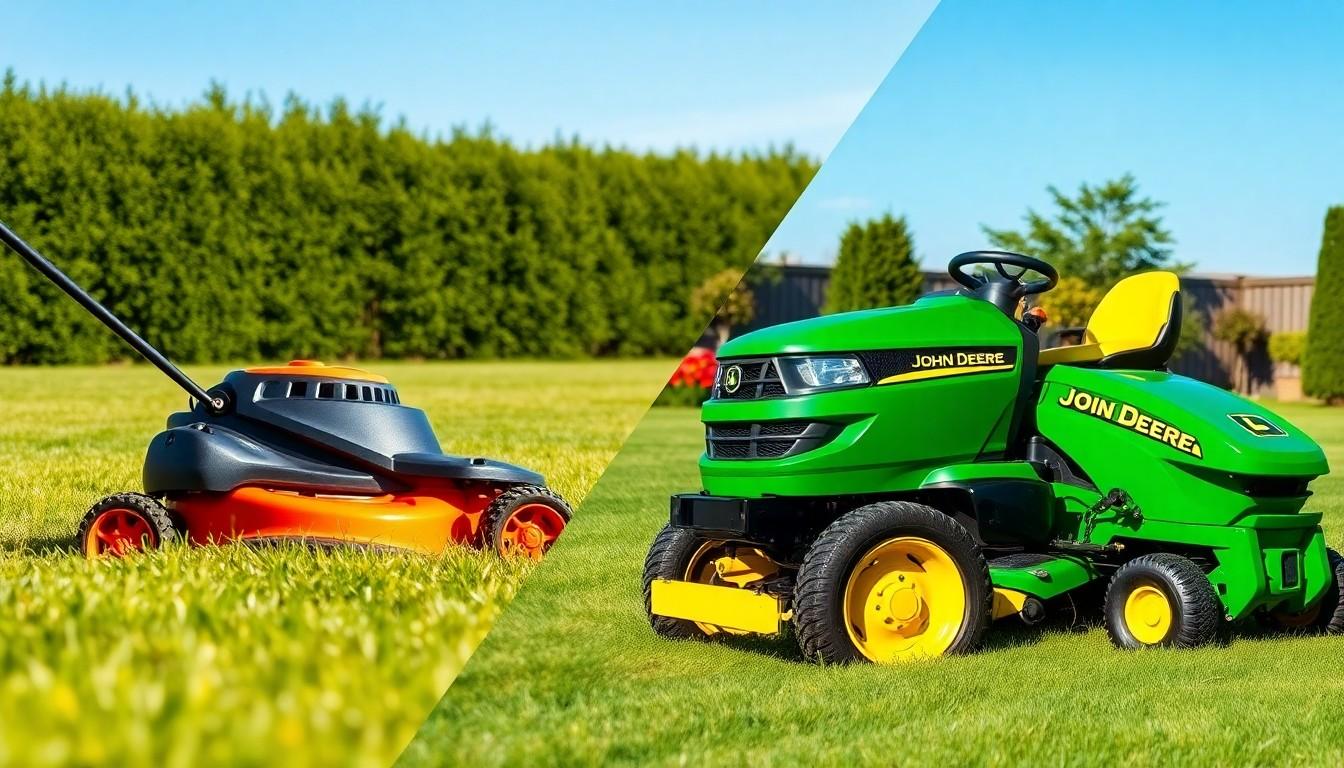When it comes to lawn care equipment, two titans dominate the market: Husqvarna and John Deere. We’ve analyzed these industry leaders to help you make the best choice for your landscaping needs. Both manufacturers offer impressive lineups of mowers, tractors, and other outdoor power equipment, but they differ in key areas that could impact your purchasing decision.
In this comprehensive comparison, we’ll explore the strengths and weaknesses of Husqvarna vs John Deere across multiple categories including performance, durability, price point, and customer satisfaction. We’ll cut through the marketing hype to deliver honest insights based on real-industry testing and customer feedback. By the end of this article, you’ll know exactly which brand aligns with your exact requirements and budget.
Understanding the Legacy of Husqvarna and John Deere
Husqvarna’s Evolution from Rifles to Lawn Equipment
Husqvarna’s journey began in 1689 as a weapons foundry in Sweden, producing muskets for the Swedish army. The company’s remarkable evolution led them through manufacturing various products including sewing machines, bicycles, and motorcycles before establishing themselves in the outdoor power equipment market in the 1950s. Their entry into the lawn care industry started with the production of their first chainsaw, marking the beginning of their outdoor power equipment legacy. Today, Husqvarna stands as a global leader in outdoor power products, offering a comprehensive range of equipment including riding mowers, zero-turn mowers, chainsaws, and robotic mowers. The brand’s Swedish heritage emphasizes precision engineering and innovation, evidenced by their pioneering work in developing autonomous mowing answers like the Automower series launched in 1995.
John Deere’s Agricultural Roots
John Deere’s story started in 1837 when blacksmith John Deere created the self-polishing steel plow, revolutionizing farming in America’s challenging Midwest soil conditions. This innovation solved the persistent problem of soil sticking to traditional cast-iron plows, dramatically improving agricultural efficiency. The company expanded its agricultural equipment line throughout the 19th and 20th centuries, introducing tractors in 1918 and consistently improving farm productivity. John Deere entered the consumer lawn care market in 1963 with their first lawn and garden tractor, leveraging their agricultural expertise to develop reliable residential equipment. The iconic green and yellow color scheme, established in 1918, has become one of the most recognizable brand identities in equipment manufacturing. Their commitment to quality is reflected in their slogan “Nothing Runs Like a Deere,” representing their focus on durability and performance across both commercial and residential product lines.
Key Historical Innovations from Both Brands
Both companies have contributed important innovations that have shaped the outdoor power equipment industry. Husqvarna introduced breakthrough technologies including X-Torq® engine technology, which reduces fuel consumption by up to 20% while cutting exhaust emissions by up to 75%. They pioneered AutoTune™ technology, automatically adjusting engine settings for optimal performance regardless of conditions. The company launched the industry’s first commercial robotic mower in 1995, revolutionizing lawn maintenance with autonomous technology.
John Deere developed the first commercially successful self-polishing steel plow in 1837, transforming American agriculture. Their introduction of the Waterloo Boy tractor in 1918 marked their entry into powered farm equipment. The company created the first all-wheel-steer lawn tractor in 1970, improving maneuverability for residential customers. They’ve consistently enhanced user experience through technological advancements like their MowerPlus™ app, which connects with equipment to track maintenance needs and mowing patterns.
These innovations demonstrate both companies’ long-standing commitment to solving real customer problems through engineering excellence, setting the foundation for their current market positions in the outdoor power equipment industry.
Product Range Comparison
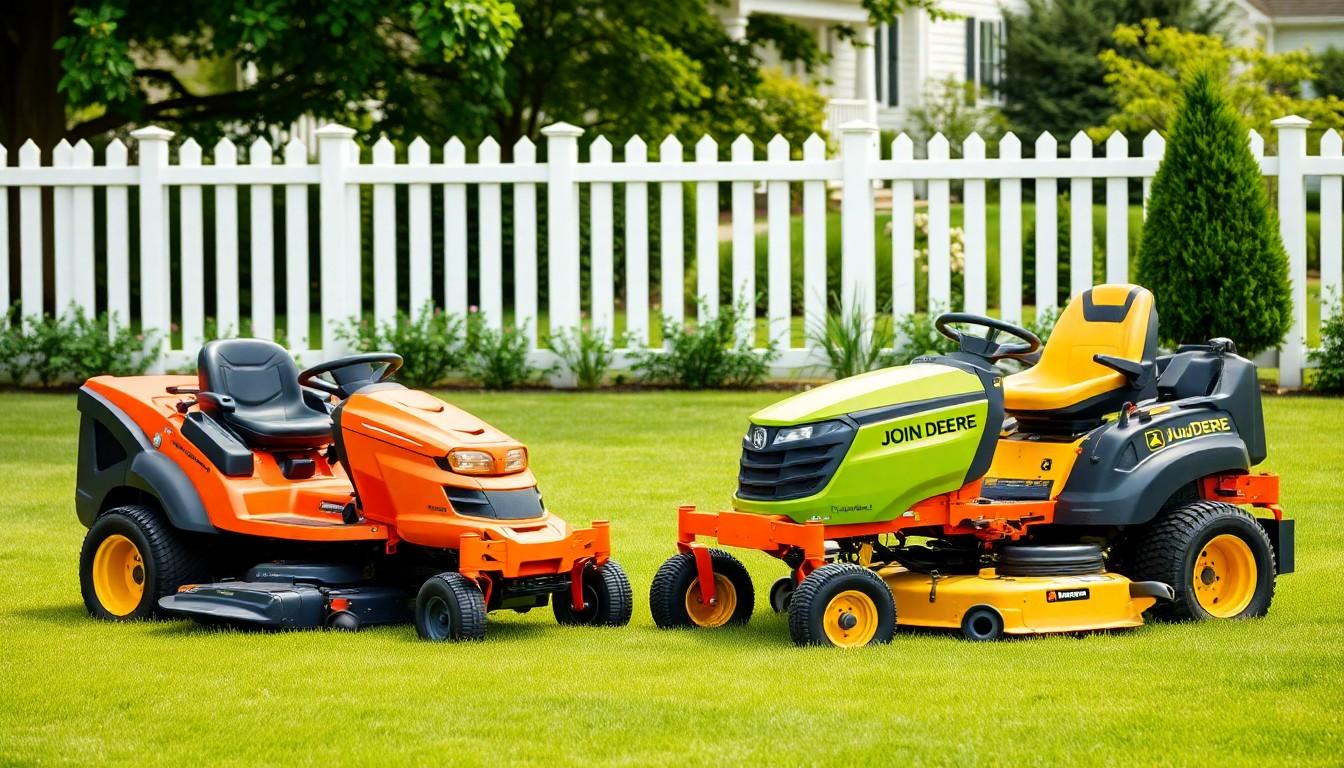
Both Husqvarna and John Deere offer diverse product lineups that cater to various lawn care needs. Let’s examine their offerings across key equipment categories to help you determine which brand might better suit your exact requirements.
Lawn Tractors and Riding Mowers
Husqvarna and John Deere riding mowers share several similarities in their core components. Both brands use engines from manufacturers like Kohler and Briggs & Stratton, though Husqvarna models typically deliver more horsepower for the price point. Transmission construction varies between the brands, with Husqvarna featuring plastic transmissions in many models and aluminum in others, while John Deere also incorporates plastic transmissions in certain units. The mowing decks from both manufacturers come in comparable sizes (including popular 48-inch options) and feature electric PTO for convenient blade engagement. Frame construction and steering mechanisms remain remarkably similar across both product lines, making performance differences relatively subtle for the average homeowner.
Zero-Turn Mowers
Zero-turn technology represents a premium segment where both brands showcase their engineering prowess. Husqvarna zero-turns excel in agility and powerful engine performance, making them ideal for properties with many obstacles. John Deere zero-turn models stand out for their exceptional durability and robust construction quality that withstands heavy use. Both manufacturers equip their zero-turns with hydraulic transmissions, multiple cutting height adjustments, and ergonomic seating for operator comfort during extended mowing sessions. Exact models from each brand offer varying horsepower ratings, deck sizes, and premium features such as suspension systems that reduce operator fatigue during long mowing sessions on uneven terrain.
Push Mowers and Walk-Behinds
The walk-behind mower category shows distinct approaches from both manufacturers. Husqvarna push mowers feature efficient, powerful engines across their gas and electric lineup, with cutting decks typically ranging from 18 to 21 inches. John Deere walk-behinds emphasize reliability and user-friendly operation with similar deck size options. Both brands incorporate practical features like foldable handles for compact storage, convenient washout ports for deck cleaning, and self-propulsion on higher-end models. Cutting height adjustment mechanisms, mulching capabilities, and bagging systems come standard on most models from both manufacturers, though exact implementation details vary across their respective product lines.
Performance Analysis

Our detailed analysis of Husqvarna and John Deere riding mowers reveals important differences in overall performance across multiple criteria. These distinctions become particularly important when making a long-term investment in lawn care equipment.
Engine Power and Reliability
John Deere exhibits superior engine reliability compared to Husqvarna, especially in models featuring their proprietary engines. The John Deere D110 model, equipped with a John Deere-manufactured engine, consistently receives positive feedback for dependability. In contrast, their D105 model with Briggs & Stratton engines experiences issues like transmission locking and oil leaks. Reliability testing data confirms John Deere’s advantage with only 30% of their zero-turn mowers requiring repairs within a four-year period. Husqvarna lags significantly in this category, with 55% of their zero-turn mowers needing repairs during the same timeframe, representing the highest repair rate among major manufacturers.
Cutting Quality and Precision
John Deere mowers deliver exceptional cutting quality through their advanced cutting systems and flexible mowing height adjustments. Their precision cutting technology creates even, clean lawn cuts across various grass types and conditions. Husqvarna mowers also offer decent cutting quality with adjustable deck heights and multiple cutting deck size options. Customer feedback indicates less consistency in Husqvarna’s cutting precision compared to John Deere models, though both brands provide satisfactory results for typical residential lawns.
Maneuverability and Handling
Zero-turn models from John Deere showcase excellent maneuverability with responsive controls that make handling around industry obstacles effortless. Their steering systems provide intuitive handling that reduces operator fatigue during extended mowing sessions. Husqvarna zero-turn mowers also demonstrate good maneuverability capabilities with their responsive controls. User reports suggest that Husqvarna models don’t always match the smooth, responsive performance of comparable John Deere units, particularly when tackling challenging terrain or complex lawn layouts with many obstacles.
Build Quality and Durability
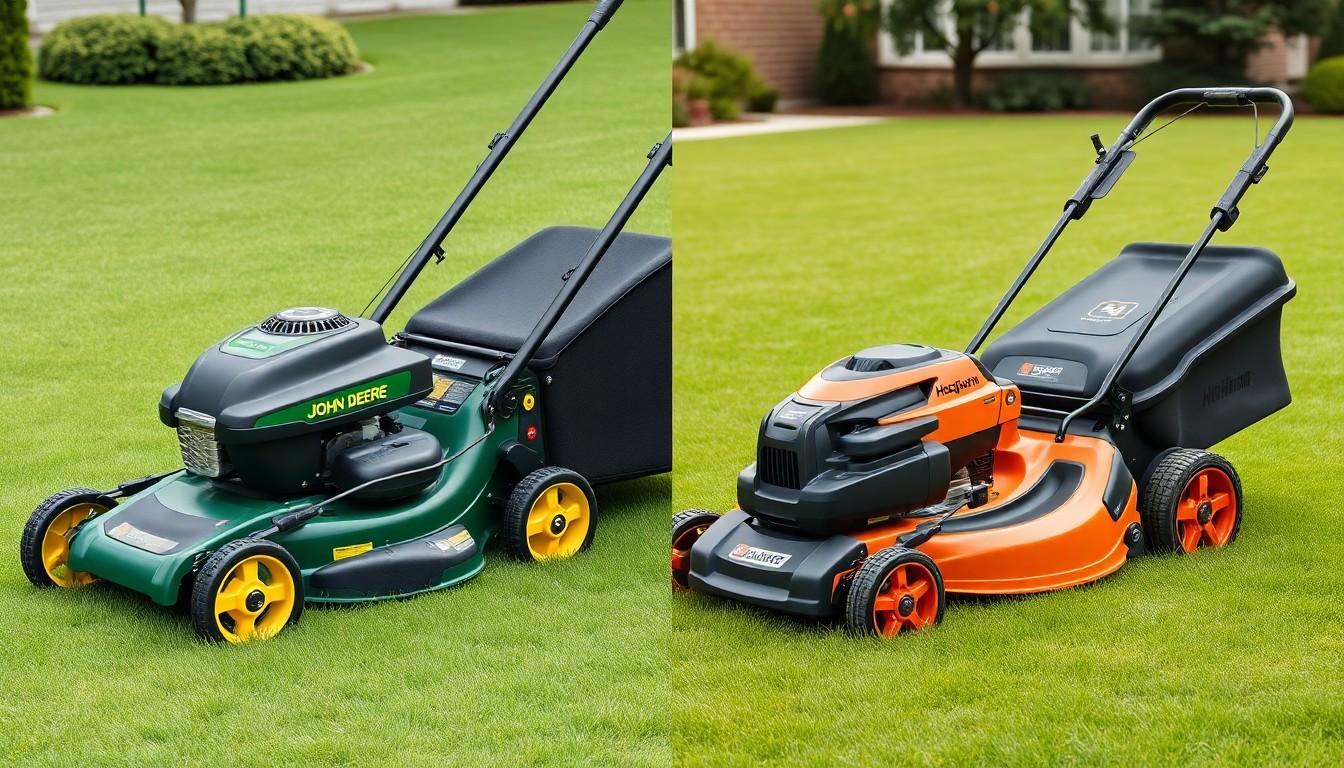
The build quality and durability of your lawn mower significantly impact its performance and lifespan. Our analysis reveals distinct differences between Husqvarna and John Deere in this crucial aspect, with John Deere generally offering more robust construction compared to Husqvarna models.
Material Construction
John Deere prioritizes metal components in their mower construction, particularly for critical parts like transmissions. These metal transmissions provide enhanced durability and resistance to wear over time, contributing to the overall sturdiness of their machines. Metal components typically withstand high stress and temperature variations better than plastic alternatives, making them ideal for demanding lawn care tasks.
Husqvarna mowers, while powerful and featuring wider cutting decks, often incorporate plastic transmissions and other components. These plastic parts, though lightweight and cost-effective, don’t match the longevity of metal components found in John Deere models. The material choices directly affect performance under strain, especially during extended use on challenging terrain or in harsh weather conditions.
Longevity and Wear Resistance
John Deere mowers demonstrate superior longevity even after extensive use. A comparison between a John Deere with 254 operating hours and a Husqvarna with 122 hours showed the John Deere maintaining better overall condition and reliability even though having more than double the usage. This remarkable durability translates to fewer replacements and potentially lower lifetime ownership costs.
Husqvarna models typically offer impressive specifications—more horsepower and larger cutting decks at comparable price points—but this comes with a trade-off. Their mowers generally require more frequent maintenance and typically don’t match the lifespan of John Deere equipment. Maintenance costs accumulate over time, making the initial price advantage less important when considering the total cost of ownership.
The durability difference becomes apparent in high-stress components like transmission systems, where John Deere’s metal construction outperforms Husqvarna’s plastic alternatives in resisting wear. Regular users who mow large properties or face challenging mowing conditions particularly benefit from investing in the more robust construction of John Deere machines.
User Experience
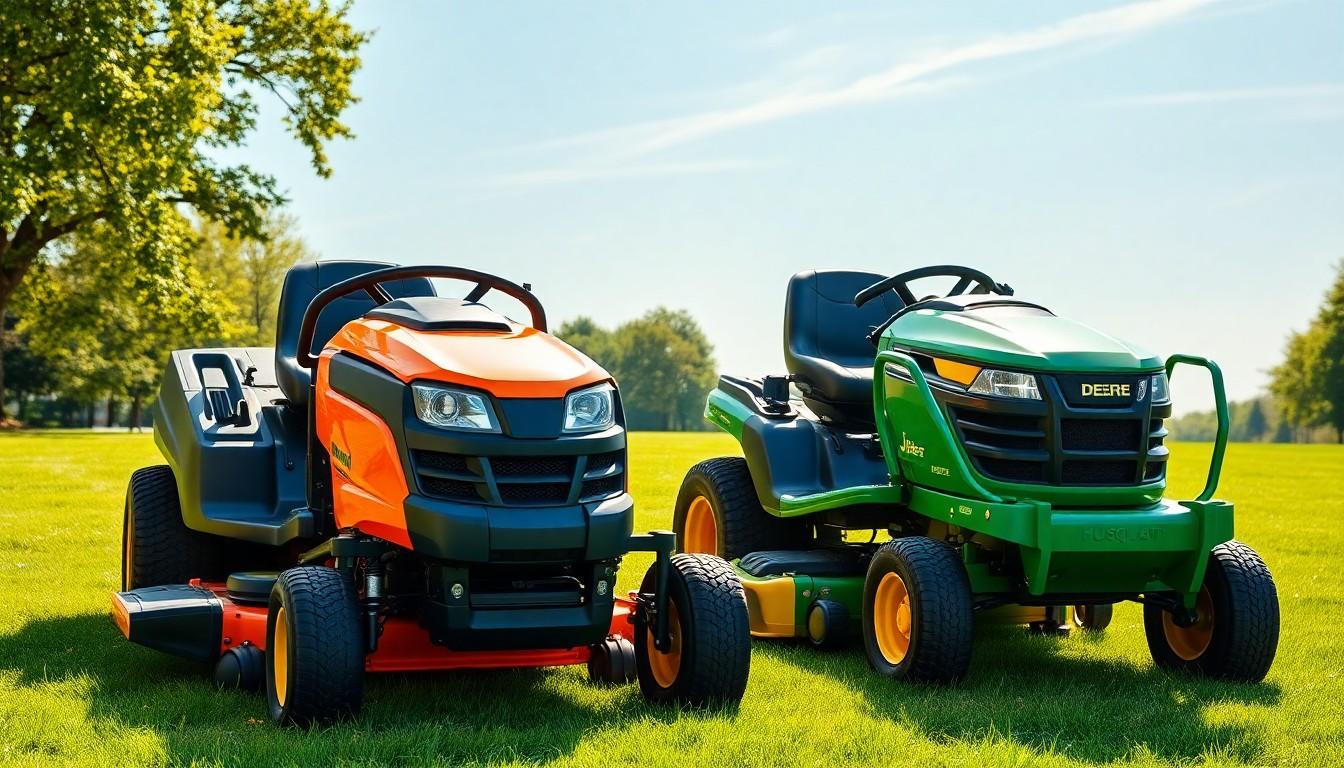
Comparing the user experience between Husqvarna and John Deere riding mowers reveals distinct differences in performance capabilities and overall operation. Our research found that Husqvarna typically offers more power and cutting capacity at comparable price points, with wider cutting decks and higher horsepower ratings in many models.
Comfort Features
Husqvarna edges ahead in comfort features with more ergonomic seating options and enhanced steering mechanisms compared to similar John Deere models. Both manufacturers use comfortable seats, but user feedback indicates Husqvarna’s seats provide better support during extended mowing sessions. The frame construction between both brands remains comparable, with each utilizing stamped decks rather than fabricated ones in most residential models. Drivers experience similar structural integrity when operating either brand, though the subtle differences in seat design and steering responsiveness contribute to Husqvarna’s slight advantage in overall operator comfort.
Ease of Operation
Both brands incorporate user-friendly features like electric Power Take Off (PTO) systems that engage the cutting deck with a simple knob pull. Husqvarna offers superior maneuverability with tighter turning radiuses in many models, making them more effective for lawns with obstacles or complex layouts. The hydrostatic transmissions found in both manufacturers’ models provide smooth speed control, though Husqvarna’s higher-end models often include heavier-duty transaxles for improved durability and responsiveness. Transmission materials vary between models, with both brands using plastic components in some units—a potential long-term durability concern noted by experienced users. Fuel efficiency and tank capacity also favor Husqvarna, requiring fewer refueling stops during extended mowing sessions.
Maintenance and Service
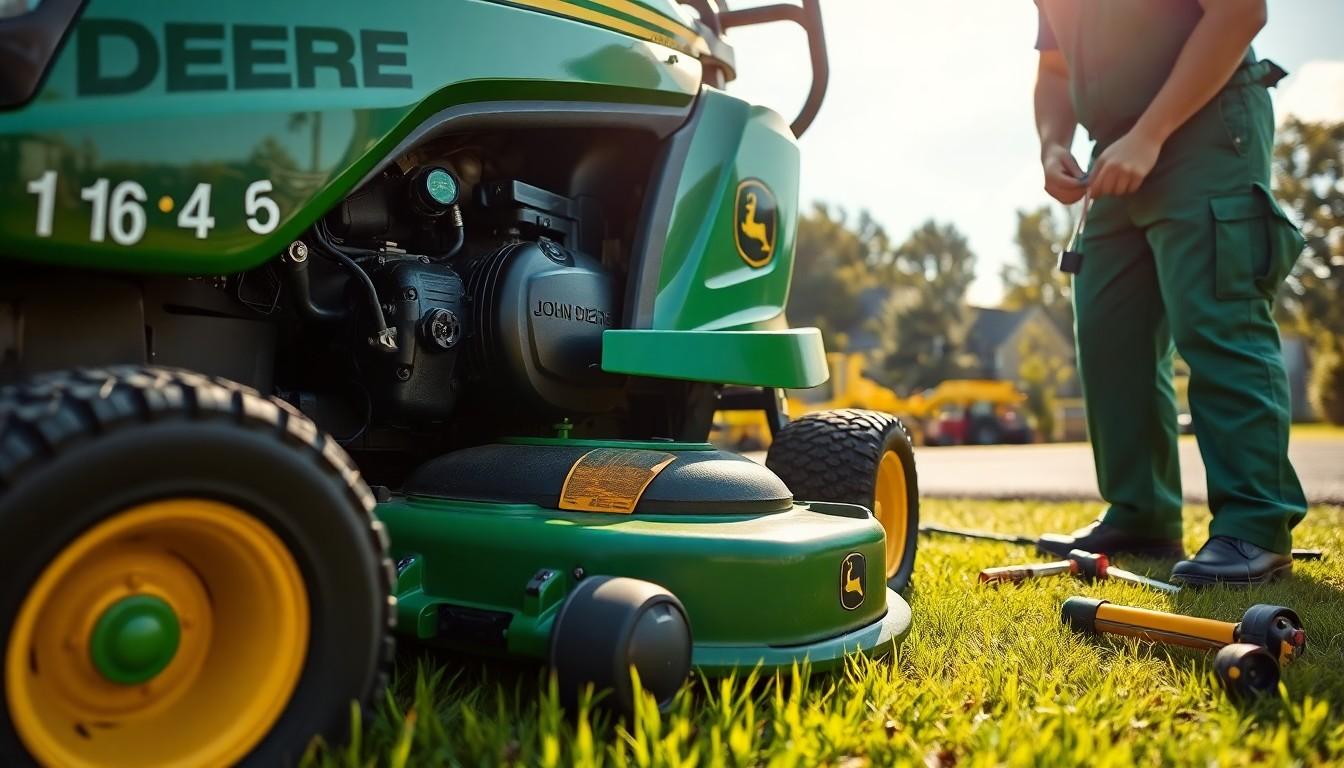
Both Husqvarna and John Deere require regular maintenance to ensure optimal performance of their lawn mowers. The components used in manufacturing these machines directly impact long-term maintenance needs and costs.
Dealer Network Accessibility
John Deere boasts a more extensive and well-established dealer network across the country, making it significantly easier for owners to access service and support. Their widespread presence means you’re more likely to find authorized dealers and service centers regardless of your location. This advantage becomes particularly valuable when unexpected repairs are needed or when regular maintenance can’t be postponed.
Husqvarna maintains a substantial dealer network too, but it doesn’t quite match John Deere’s reach, especially in rural areas. The difference in accessibility can be a deciding factor for homeowners who live outside major metropolitan areas and need reliable service options nearby.
Parts Availability
Both brands offer good parts availability thanks to their established market presence. John Deere’s larger network and broader market coverage provide a slight edge in finding parts and accessories quickly. Owners of John Deere equipment typically experience less downtime when repairs are needed due to this enhanced parts accessibility.
Husqvarna’s approach to parts compatibility creates a unique advantage – they use similar components across different models, simplifying the replacement parts process. This standardization means that certain parts work across multiple Husqvarna models, reducing potential compatibility issues. The distinction between component materials is noteworthy, as Husqvarna mowers with plastic transmissions may require more careful maintenance compared to models with aluminum transmissions.
Engine maintenance remains crucial for both brands, with proper care of Kohler or Briggs & Stratton engines significantly extending the mower’s lifespan. Regular oil changes, air filter replacements, and blade sharpening contribute equally to the longevity of both Husqvarna and John Deere mowers.
Price Point and Value Proposition
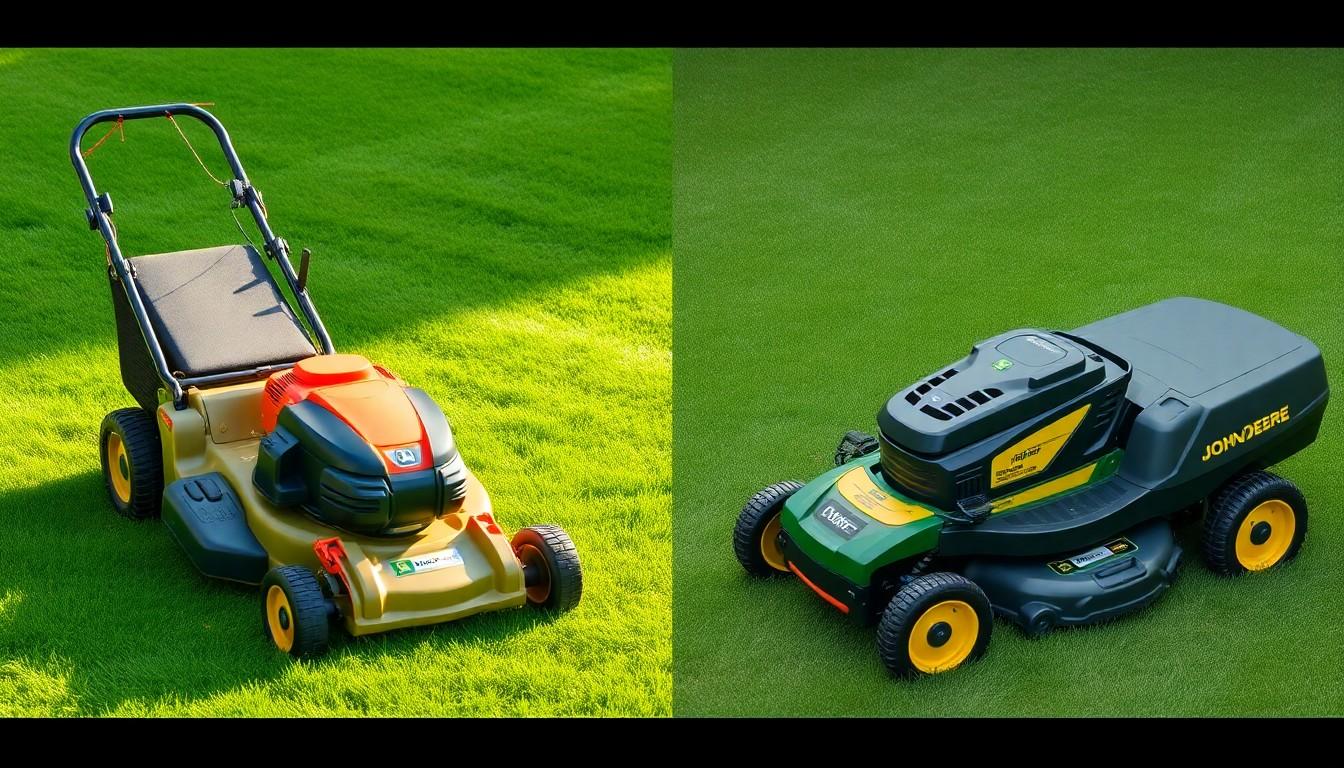
Husqvarna and John Deere offer comparable pricing for similar models, though important differences emerge when examining their value propositions. Models with similar features typically fall within the same price range, such as a Husqvarna with a 21 HP engine and 46-inch cutting deck priced similarly to a John Deere with a 19.5 HP engine and 42-inch cutting deck.
Engine and Power
Husqvarna mowers frequently deliver more powerful engines at equivalent price points. A standard Husqvarna model might feature a 21 HP Kohler engine while a similarly priced John Deere comes equipped with a 19.5 HP Briggs & Stratton engine. This power advantage becomes less noticeable for homeowners with smaller or medium-sized yards where the extra horsepower isn’t fully utilized.
Cutting Deck
Cutting width represents another area where Husqvarna offers more for your money. Their mowers commonly feature 46-inch or 48-inch decks at price points where John Deere provides only 42-inch decks. Larger cutting decks translate to fewer passes and quicker mowing times, particularly beneficial for properties with expansive lawns.
Transmission
Transmission materials constitute a critical differentiator between these brands. Many Husqvarna models use plastic transmissions, raising potential durability concerns, while premium Husqvarna models and comparable John Deere options often incorporate aluminum transmissions. This material difference affects long-term reliability, especially under heavy use conditions.
Features and Build Quality
Both manufacturers include similar core features like electric PTO, hydrostatic transmissions, and stamped steel decks across their product lines. Higher-end Husqvarna models stand out with heavier-duty transaxles and superior build quality compared to John Deere models at identical price points, offering better value for serious users.
Warranty and Additional Features
Husqvarna’s advantage extends to warranties and supplementary features in certain price brackets. Their models often include better fuel tanks, improved turning radius, and enhanced steering and seat comfort compared to equivalently priced John Deere machines, increasing their immediate value proposition.
Long-Term Costs
Initial purchase price tells only part of the story. While Husqvarna provides more power and features at competitive prices, John Deere mowers may prove more economical over their lifespan due to lower maintenance and repair costs. This long-term value consideration becomes particularly important for buyers planning to keep their mowers for many seasons.
Environmental Considerations
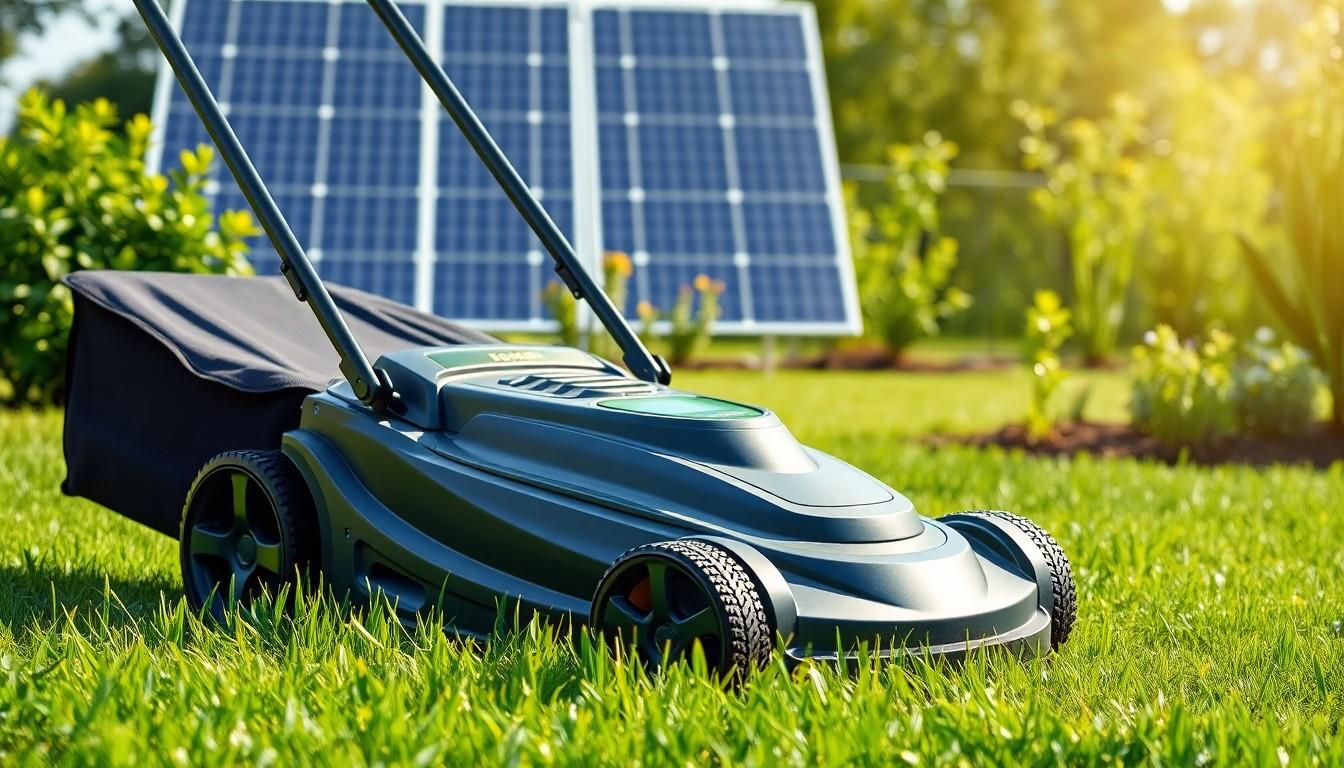
Husqvarna demonstrates a stronger commitment to environmental sustainability through their product development and manufacturing practices. Their important investment in battery-powered equipment—including lawn mowers, chainsaws, and trimmers—has positioned them at the forefront of reducing emissions in the lawn care industry.
The Automower Solar Hybrid represents Husqvarna’s innovative approach, combining renewable energy with cutting-edge lawn care technology for a greener solution. Manufacturing facilities operated by Husqvarna carry out energy efficiency protocols and waste reduction practices that further their environmental credentials.
John Deere’s environmental initiatives aren’t as prominently documented in recent sources compared to Husqvarna. Though John Deere likely participates in broader industry sustainability trends, exact environmentally focused products or detailed sustainability reports aren’t as readily available.
Comparing emissions reduction strategies reveals Husqvarna’s clear advantage with their extensive battery-powered tool lineup and hybrid models. Their proactive approach to sustainable manufacturing processes, including energy efficiency improvements and waste reduction at production sites, contrasts with the limited public information about John Deere’s environmental programs.
For environmentally conscious consumers, Husqvarna’s transparent sustainability efforts and expanded eco-friendly product range currently offer more compelling options than John Deere’s offerings.
Conclusion
Choosing between Husqvarna and John Deere eventually depends on your exact needs and priorities. While Husqvarna offers more power and features at competitive price points with strong environmental credentials, John Deere excels in durability, cutting precision and long-term reliability.
For those seeking immediate value and eco-friendly options, Husqvarna presents compelling choices. If you’re investing for the long haul and prioritize construction quality with accessible service support, John Deere deserves serious consideration.
We’ve analyzed both brands thoroughly so you can make an well-informed choice based on what matters most to your lawn care requirements. Whichever brand you choose you’ll be getting equipment from industry leaders with proven track records of innovation and quality.
Frequently Asked Questions
Which brand offers better engine reliability, Husqvarna or John Deere?
John Deere exhibits superior engine reliability, particularly in models with proprietary engines. Husqvarna mowers have a higher repair rate, especially in their zero-turn models. For long-term dependability, John Deere generally provides better performance with fewer maintenance issues over time.
How do the prices compare between Husqvarna and John Deere?
Both brands offer comparable pricing for similar models, but Husqvarna typically provides more powerful engines and larger cutting decks at equivalent price points. While Husqvarna may have a lower initial purchase price, John Deere mowers could be more economical long-term due to lower maintenance and repair costs.
Which brand has better build quality and durability?
John Deere offers more robust construction with metal components in critical parts like transmissions, enhancing durability and wear resistance. Husqvarna often incorporates plastic components which, while lightweight and cost-effective, don’t match John Deere’s longevity. John Deere mowers maintain better overall condition even after extensive use.
Are Husqvarna mowers more comfortable to operate than John Deere?
Husqvarna generally provides more ergonomic features, including better seating options and enhanced steering mechanisms, leading to improved comfort during extended mowing sessions. Their models also typically offer superior maneuverability and fuel efficiency, requiring fewer refueling stops compared to similar John Deere models.
Which brand is more environmentally friendly?
Husqvarna demonstrates a stronger commitment to sustainability through investments in battery-powered equipment and eco-friendly manufacturing practices. Their Automower Solar Hybrid exemplifies this approach. John Deere’s environmental initiatives are less documented, making Husqvarna the better choice for environmentally conscious consumers.
How do the cutting capabilities compare between brands?
John Deere mowers deliver exceptional cutting quality and precision, outperforming Husqvarna in consistency. However, Husqvarna typically offers wider cutting decks and higher horsepower ratings at comparable price points, providing greater cutting capacity for larger areas.
Which brand offers better maintenance and service support?
John Deere has a more extensive dealer network, making service and support more accessible, especially in rural areas. They also have broader market coverage for parts availability, reducing downtime for repairs. Husqvarna offers good parts compatibility across models, which simplifies the replacement process.
What are the key innovations from each brand?
Husqvarna is known for innovations like the Automower series and X-Torq® engine technology that enhances efficiency and performance. John Deere’s innovations include the MowerPlus™ app and technologies derived from their agricultural expertise, showcasing their engineering excellence in lawn care equipment.

